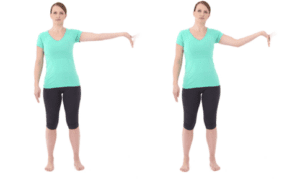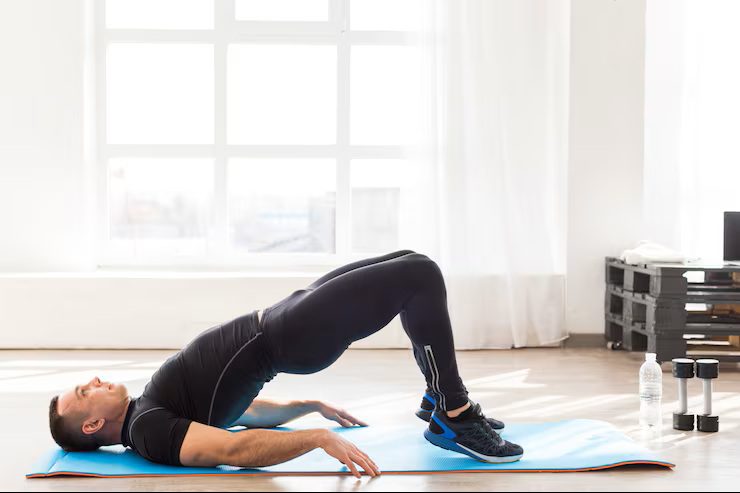The cause of a headache originating from the above 4 structures can vary – ranging from posture, active trigger points (muscle ‘knots’), and stress. Don’t underestimate the effect that stress can have on our bodies! According to the American Headache Society, 80% of migraine sufferers report that stress is a trigger. At present, there are an abundance of reasons why we may be more stressed than usual; as ongoing changes in our work, social life, sport, and livelihoods take place.
In my experience, at least once per fortnight I will see a patient who presents with complaints of headaches. The good news? Often cervicogenic headaches are easily managed and treated – see below how you can help to keep them at bay.
Exercises to help manage headaches from working from home
Posture: If you are now working from home in a less-than-ideal ergonomic set up, implementing some simple changes to your workspace can make immediate effect. Although the comfort of the couch might be calling to you, you’re far better off at a desk or table – ideally roughly the height of your elbows. Missing your standing desk at work? Your kitchen bench or ironing board can be a perfect alternative – use stacked books if you need to boost the height of your computer.
Joint mobilisation: Taking regular breaks from the desk is important for both mind and body, and no the constant interruption from the kids doesn’t count as a proper break! The below stretch for the joints in the cervical spine (neck) is quick and effective:

- Stand or sit straight, looking ahead, and place two fingers on your chin.
- Push your chin so that your head goes straight back, lengthening through the back of your neck, and keeping your eyes forwards.
- Hold 1 sec, and then relax to your start position. Repeat 10x every few hours.
Muscle stretches: A commonly-implicated muscle in office workers is the levator scapulae, which attaches at the uppermost vertebrae, and runs downwards until its insertion into the scapula (shoulder blade). Try this stretch to target neck tension:

- Start in a seated position.
- Place the hand of the side you want to stretch behind your lower back.
- Take the opposite hand and gently pull your head forwards and toward the opposite side – you should be looking at your armpit (pictured). The stretch should be felt from the base of your skull down into your shoulder blade.
- Hold this position for 30sec.
Nerve stretches: In the same way that you can develop tension in a muscle, you can also develop tension in nerves too. A nerve stretch is called a ‘flossing’ exercise, due to the way in which the nerve glides in the limb during these stretches. It is important that this exercise should be fluid at all times, i.e. not holding the stretch in a sustained position, as you would for a muscle stretch. The below ‘flossing’ exercise is for the median nerve.

- Stand perpendicular to a wall, with your side to be stretched closest to the wall.
Lift your arm out to the side, turn your palm to face the ceiling, and rest your fingers against the wall. - If this is comfortable, step away from the wall little by little, slowly straightening your elbow, until you begin to feel a slight stretch.
- Release the stretch by bending your elbow, keeping your fingers in contact with the wall.
- Continue this in a fluid movement, bending and straightening the elbow. Repeat 10x repetitions, no more than 5x per day.
Cervicogenic headaches typically respond very quickly to manual therapy, such as treatment provided during a physiotherapy session. If you’re finding that your headache is niggling along and you feel you need some ‘tough love’ in the form of a physio’s thumbs – contact us for a physiotherapy appointment today.
Kate Reardon (B.PHTY)



